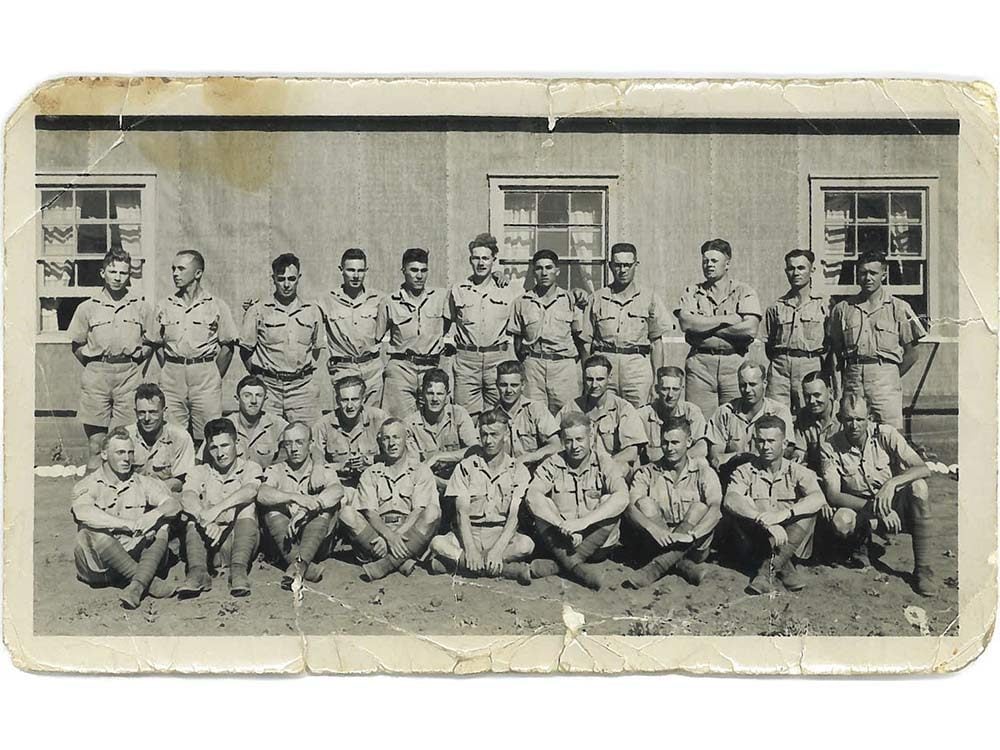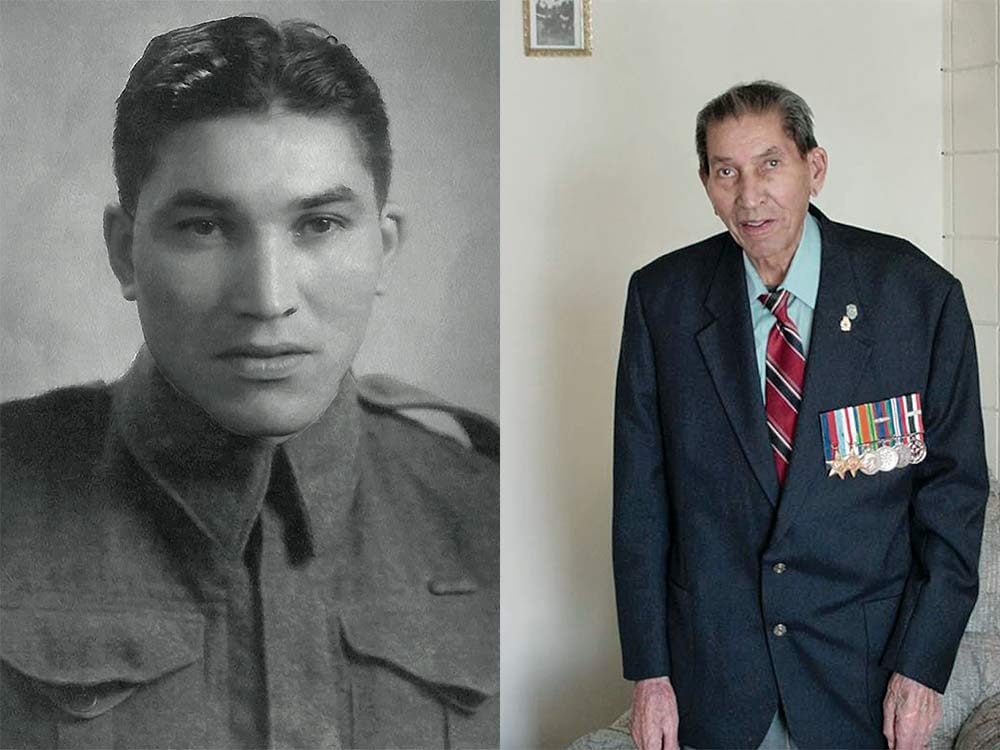
The Fascinating Story of Alberta’s Cree Code Talkers
My uncle Charles “Checker” Tomkins was a very humble, proud, humorous Métis man, who later in life became a member of the Poundmaker’s Reserve in Saskatchewan. In 2003, just two months before Uncle Charles’s death at the age of 85, Smithsonian Institution representatives Tim Jones and Kevin Lewis came to Calgary to interview him about the Cree Code Talkers program he was part of during the Second World War. The first thing Tim asked my uncle was, “How would you describe yourself?” Without missing a beat my uncle said, “I am a nice-looking man!”
Charles was born January 8, 1918, in the village of Grouard in northern Alberta, to Peter and Isabelle Tomkins. He was one of eight children and four stepchildren. His grandparents were Peter and Marie Tomkins. He married Lena Anderson in 1940 and joined the army soon afterwards.
My uncle spoke fluent Cree and credits his grandparents for teaching him the language. His grandmother was Cree and his grandfather was Caucasian, but also spoke fluent Cree. His grandfather taught him how to say things in Cree that were not actually part of the language at the time—modern references such as airplane or train, for example. The “Cree” being spoken back then was usually a blend of English, French and Cree, but, according to Uncle Charles, the version his grandparents spoke made more sense than that of any other Cree speakers he knew.
The army sent Uncle Charles overseas in 1940 and he said the voyage was horrific. There were more than 800 soldiers on board the ship, and they were fed salt herring and plain beets every day! Charles said he slept in a hammock and had a heck of a time getting into it each night!

What it Was Like Being Assigned to the Cree Code Talkers
When he got to London, he was called to the Canadian military headquarters—he had no idea why, nor did his commanding officer. When he got to the headquarters, he saw many other “Indians” of different tribes. Charles was then paired off with another Cree soldier from Saskatchewan and they were put in different rooms with a phone. They were then given different things to translate. It sounds like Charles played a pivotal role in how the code was developed.
He was assigned to the American Eighth Air Force and the Ninth Bomber Command in England, and was asked about other Crees he might know stationed overseas. He named six others, all from Alberta. They were brought together for about a week, and he showed the others how to use Cree terminology for various animals and birds as code words. So, for example, when they talked about the B17 bomber, they said, “amo tepakohposâp” (“bee” and “17” in Cree). A Spitfire aircraft became “iskotew” (“fire” in Cree) and the Mustang translated into “pakwatastim” (“wild horse” in Cree). To indicate how many aircraft were seen, they would include the appropriate number in Cree: “Nîstanaw amo tepakohposâp pâskisikana” (20 B17 bombers spotted). (Find out how Canada helped recover one of World War II’s most iconic aircraft.)
When the war ended he came home and met his brother in Edmonton, who was 17 and in full uniform, eager to ship out. Charles was so happy that the war was over. He said no one should ever have to go to war—it is a horrible experience.
My uncle was not too happy about his discharge; he said all he got was $100 to buy civilian clothes, a transport warrant and a handshake. He said that he was not told about any land he may have been entitled to as a reward for his service, but thinks that offer was only for First Nations soldiers. He re-joined the army after the war because there was no other work to be found, and was posted to Calgary. He also told us that no matter what an “Indian” soldier did, somehow he was overlooked for promotions. It was only after years of working for the army that he was made a corporal.
Alex Lazarowich, a documentary film producer, and director Cowboy Smithx made a documentary about Cree Code Talkers, which has since won several awards. It is vitally important to keep our Cree language alive and to make sure that we keep teaching it in the schools; the documentary emphasizes the role the language played in winning the Second World War.
Next, check out 30 powerful true stories that bring Remembrance Day to life.